In this report, we’ll experience what it’s like to use Yeosu Airport (RSU) – which serves the southern coastal province of Jeollanam-do, Korea – as a passenger departing on a domestic flight.
Note: The information and pictures presented here are drawn from my own experience of using Yeosu Airport as a departing domestic passenger on 27 January 2020. Details may change at any moment and without prior notice.
Click here to read a separate report covering my experience as an arriving passenger at the same airport.
IMPORTANT! This post does NOT reflect any quarantine-related procedures that might have been introduced after my visit (in response to the ongoing global health emergency). Additional steps such as temperature checks, contact tracing form-filling, sanitation stops, etc. should be expected and allotted extra time for.
OVERVIEW
Airport name (English) : Yeosu Airport
Also known as : Yeosu/Suncheon Airport
Airport name (Korean) : 여수공항 (Yeosu Gonghang)
IATA code : RSU
ICAO code : RKJY
Country : Republic of Korea (South Korea)
Major cities served : Yeosu and Suncheon, Jeollanam-do
Routes served : Domestic
Runways : One
Terminals : One
Passenger traffic : 635,637 (2019)
Links : Official Website / Wikipedia
LOCATION
THE DEPARTURE EXPERIENCE
Step 1: Travel to the airport
RSU is roughly midway between Suncheon (to the north) and Yeosu (to the south) – the two largest cities in Jeollanam-do. The airport is well connected to both via road-based public transport.
To make commuting easier, download either KakaoMap (iOS / Android) or Naver Map (iOS / Android) onto your smartphone. They’re free to use and are a massive help in navigating Korea’s public transportation networks – especially bus routes. Both have English interfaces available, though bear in mind that Korean text may appear to varying degrees in the search results (especially on KakaoMap).
For my part, I was due to fly on the first Seoul-bound service and wanted to reach RSU as early as possible. Unwilling to wait for the first buses, I hailed a taxi at Suncheon Station (near the guesthouse where I was based) and sped off towards the airport…
…where, a little after 5 AM, I found the doors still closed and the lights switched off.
A staff member soon approached, perhaps wondering to himself what on earth this foreigner was doing outside the terminal with the airport shuttered for the night. After a brief radio call to headquarters, he invited me to wait inside the darkened check-in hall.
Moral of the day: There’s “early”, and then there’s “too early”. 😉
Step 2: Check in for your flight
RSU’s terminal building is so compact that the arrivals hall is fully contiguous with the check-in lobby. Both are on 1F, with arrivals in the northern part and the check-in counters in the southern section.
Let’s have a look around the check-in hall. Facing towards the counters, you’ll see Korean Air and Hi Air (a new budget carrier) on the left…
…and Asiana Airlines towards the right. Note that Jeju Air started serving RSU a few months after I passed through the airport; their counters were set up next to Asiana’s.
As for other recent developments, I’ve just learned that Korean Air plans to stop serving RSU in August 2020. Whether this pull-out pushes through or not isn’t for me to say; I’d suggest keeping an eye on the airline’s official website for news.
The available check-in options and procedures will vary depending on your carrier. For this report, I’ll describe my own experience checking in for a domestic flight operated by Korean Air (IATA code: KE).
To save time at the counter, I kicked off the process by using one of the terminal’s self check-in kiosks.
I simply tapped on the icon for my airline (Korean Air) and followed the on-screen instructions. For details, please refer to the step-by-step procedure on KE’s official website. (There’s also an online check-in option available for KE flights, and other carriers will have their own versions of the same.)
Boarding pass in hand, I approached the KE counters in order to check in my luggage.
After completing all check-in formalities, the counter agent may ask you to wait nearby for a few minutes whilst your checked luggage undergoes security screening (out of sight on the conveyor). If the stated time passes without you being summoned, that means the scanners haven’t picked up anything suspicious in your bag – and you’re free to move on.
Step 3: Enjoy the terminal’s landside facilities
RSU is typical of smaller airports where most facilities are concentrated landside – i.e., in the publicly accessible zone before the final security checkpoint. The restricted, passengers-only airside section (as we’ll see later on) is really nothing more than a waiting area. If you’re in the mood to grab a bite or do some souvenir shopping at RSU, you’ll need to do that before passing through security.
Let’s start with 1F, on the same level as the check-in hall. Note that the floor plans shown here are orientated differently: in the first image, the check-in/departures area is on the left and the arrivals area is on the right; in the second image, you have arrivals on the left and departures on the right.
Now for some pictures to help illustrate the scene. We’ll start in the check-in/departures area and gradually move north towards the arrivals lobby.
That’s 1F covered. Now let’s head up to 2F – the same level as the final security check and boarding gates.
You’ll find more options for waiting, eating, and shopping up here than down on 1F, although the range is still quite limited overall. Bear in mind that RSU is a small, quiet airport – especially when compared with the likes of Seoul’s large, busy Gimpo Airport – so one’s expectations should be adjusted to match.
Needless to say, the ongoing global health emergency has led to major changes in airport operations worldwide. Bear in mind that some of the establishments seen here may have already scaled back their operations, or perhaps closed altogether.
Step 4: Proceed to outbound security
The airside holding area is quite small (as we’ll see later) and seating is limited, so you won’t be allowed through until shortly before your flight’s departure time.
Of course, photography is frowned upon (to put it mildly) within the security checkpoint, so I’ll do my best to describe the process in words.
First, there’s an initial document inspection. Present a valid photo ID and your boarding pass to the staff on duty, who will reconcile the details on both documents before allowing you through. As a foreign visitor in Korea, I had my passport on me anyway and simply produced this for inspection (even though I was boarding a domestic flight).
Next, there’s the usual airport security screening where your carry-on bags are passed through a scanner and you’re directed to walk through a metal detector.
Once you’re through, you’re done! This is a domestic terminal, so there are no immigration counters waiting on the other side after security.
Step 5: Wait for your flight
The airside zone is quite small, with just three numbered gates and two aerobridges (so far as I could tell).
Need to grab a bite? Hoping for a last-minute souvenir purchase? Tough luck, mate – all you’ll find here are vending machines.
Step 6: Board your aircraft
Nothing out of the ordinary here. Wait for the call, find your queue, present your boarding pass, walk aboard. Easy as pie.
Found your place? Excellent. Fasten that seat belt, settle in, and relax – because your job is finally done.
Safe and happy travels, everyone.
Cheerio.
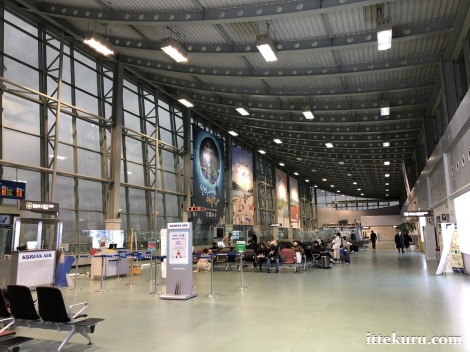
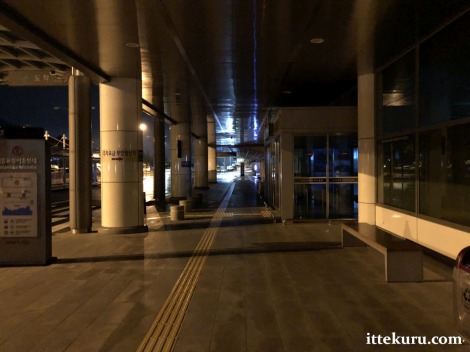
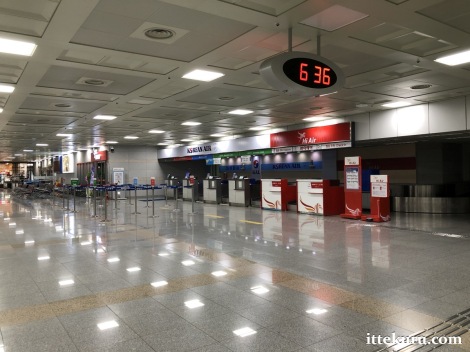
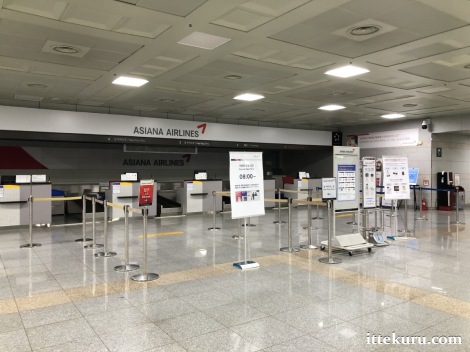
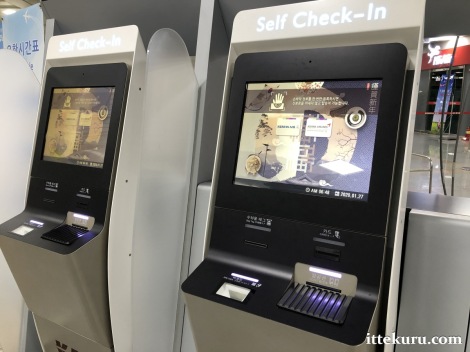
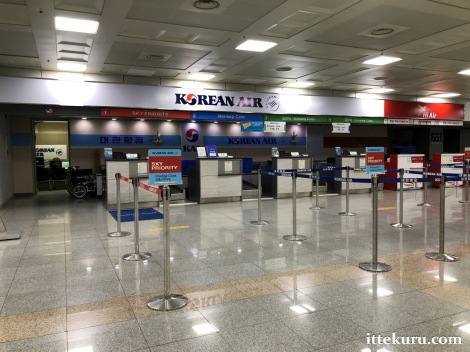
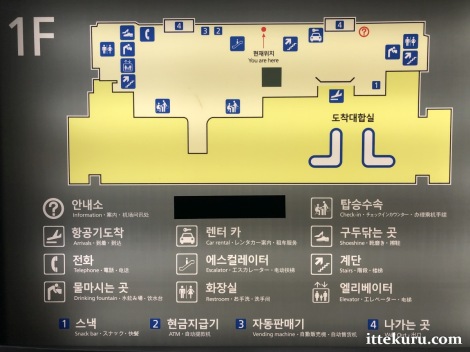
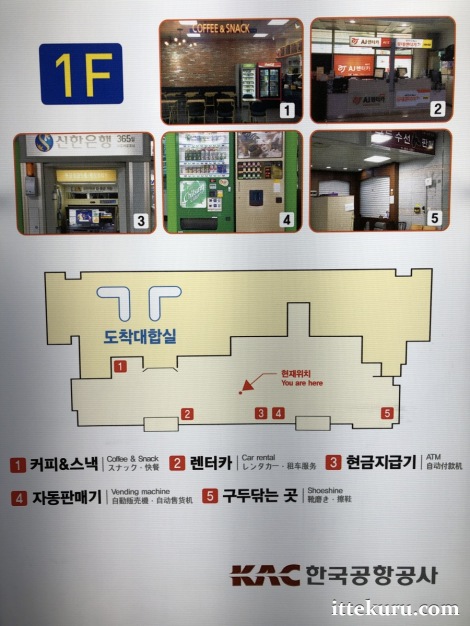
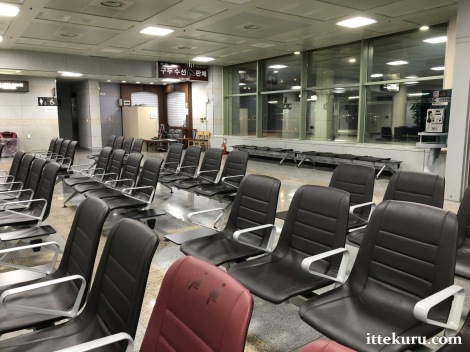
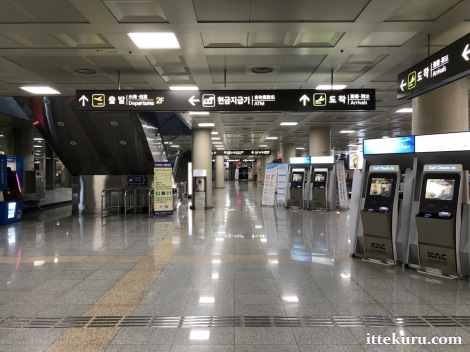
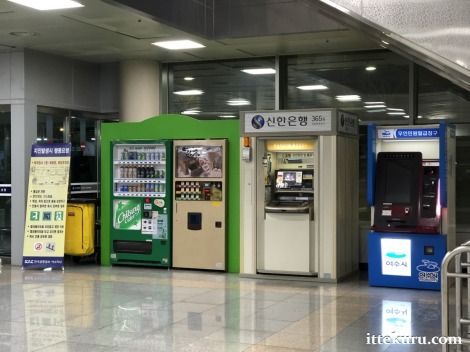
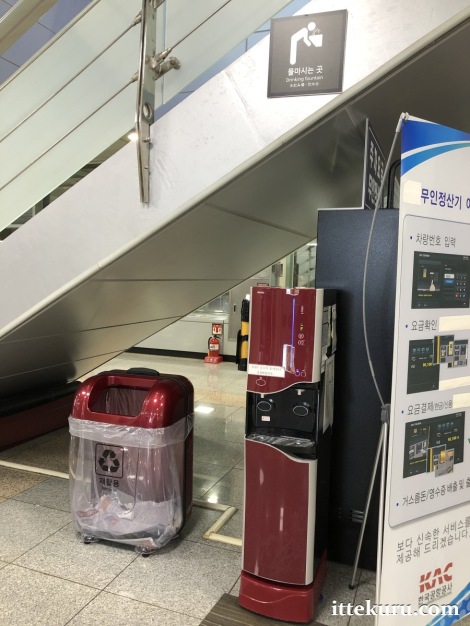
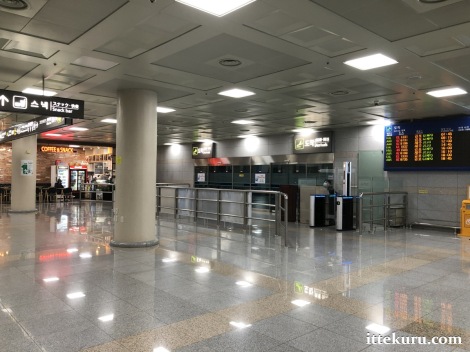
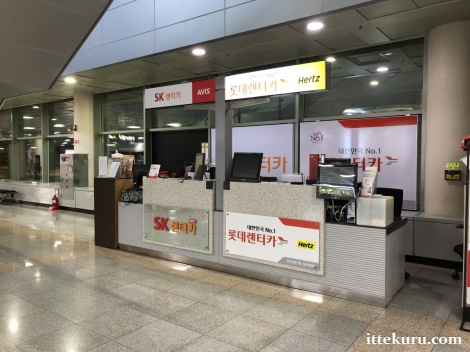
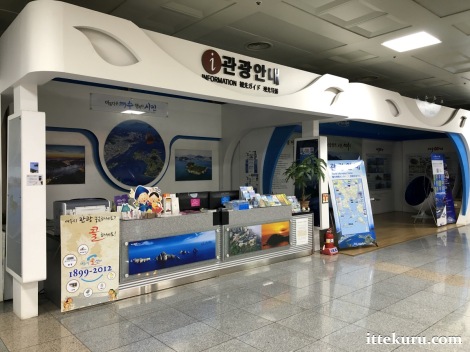
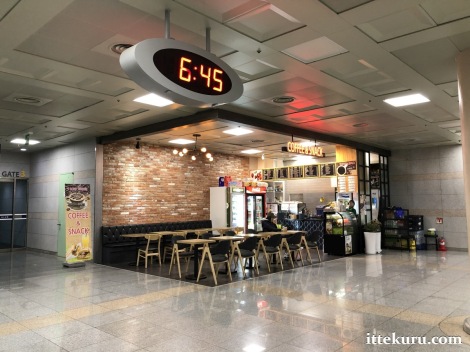
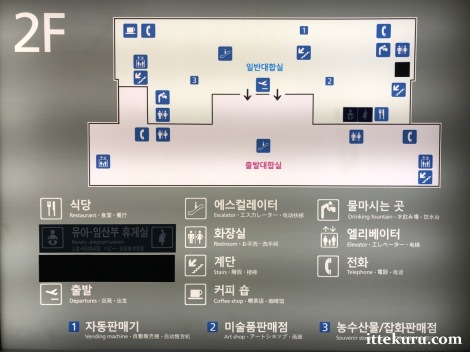
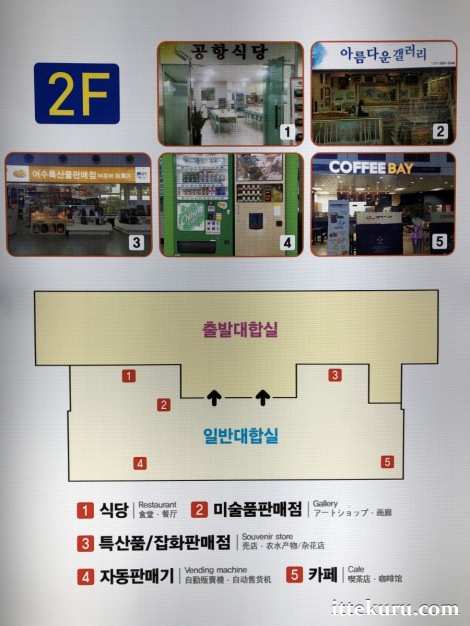
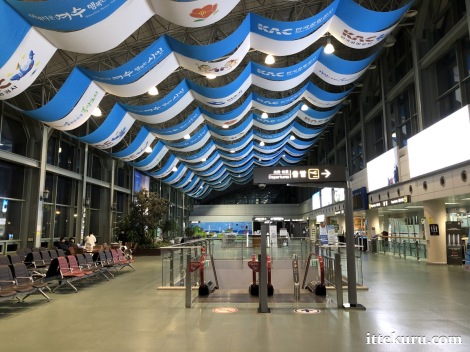
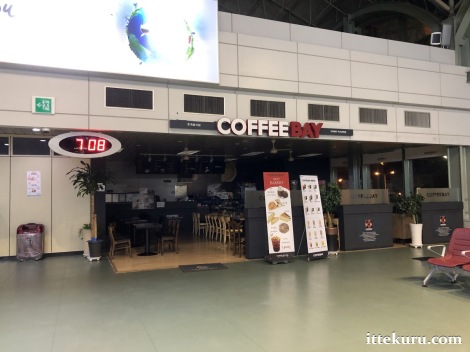
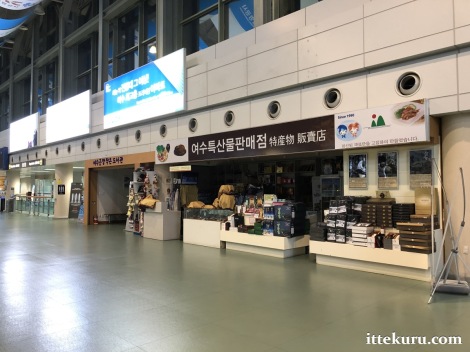
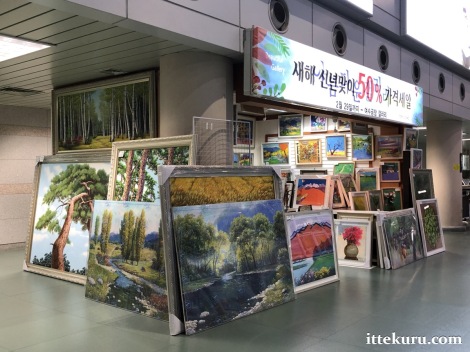
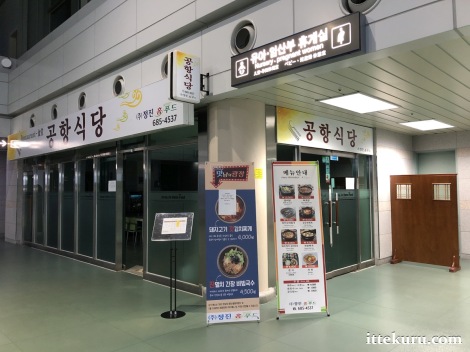
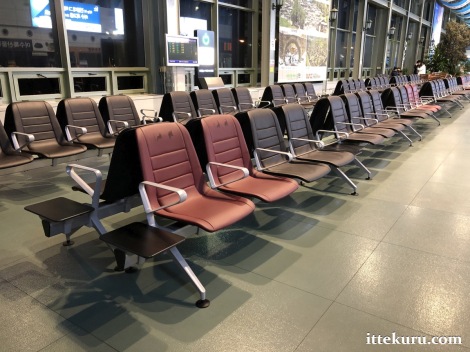
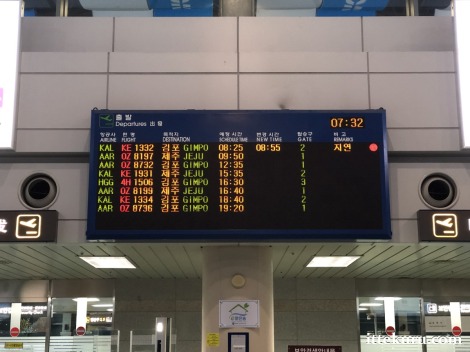
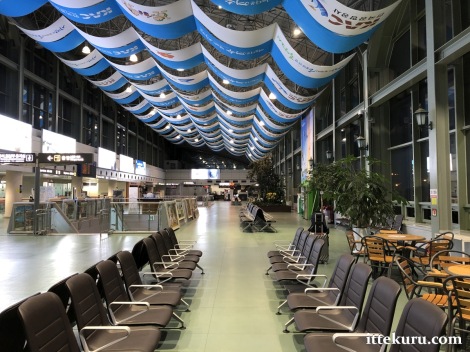
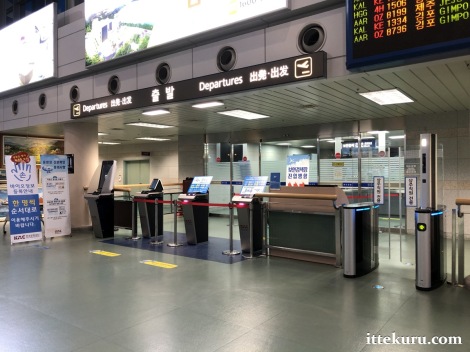
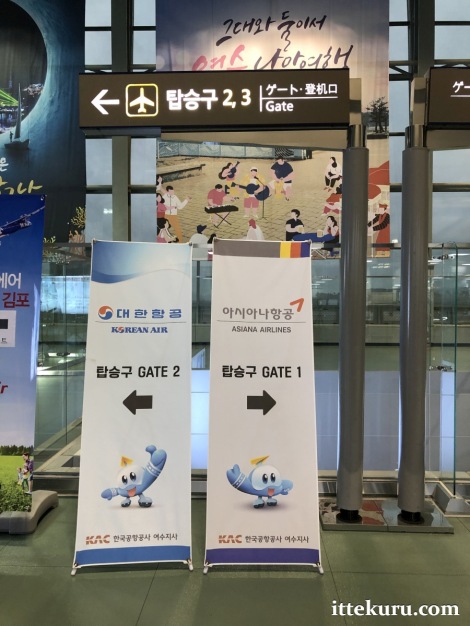
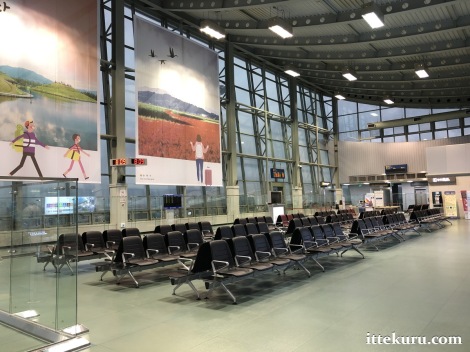
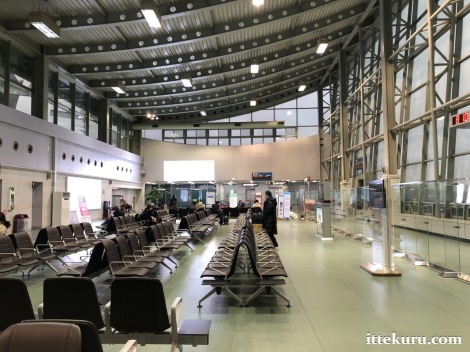
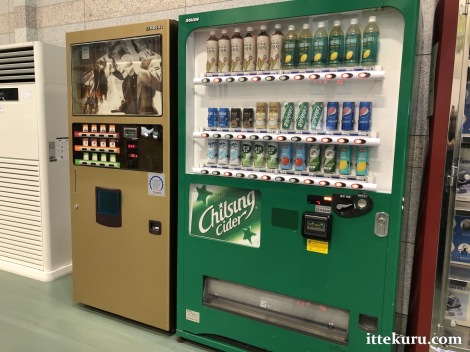
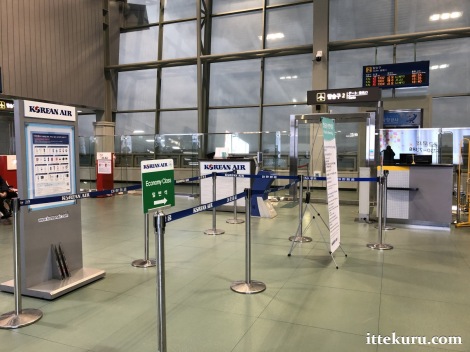
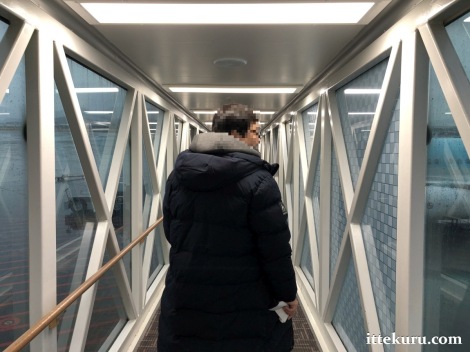
Pingback: Terminal Report: Yeosu Airport (RSU), Jeollanam-do, South Korea – Arrivals | Within striking distance·
Pingback: Flight Report: RSU-GMP on Korean Air Flight KE 1332 (27 January 2020) | Within striking distance·
Pingback: Terminal Report: Gimpo Airport Domestic Terminal, Seoul, South Korea – Arrivals | Within striking distance·